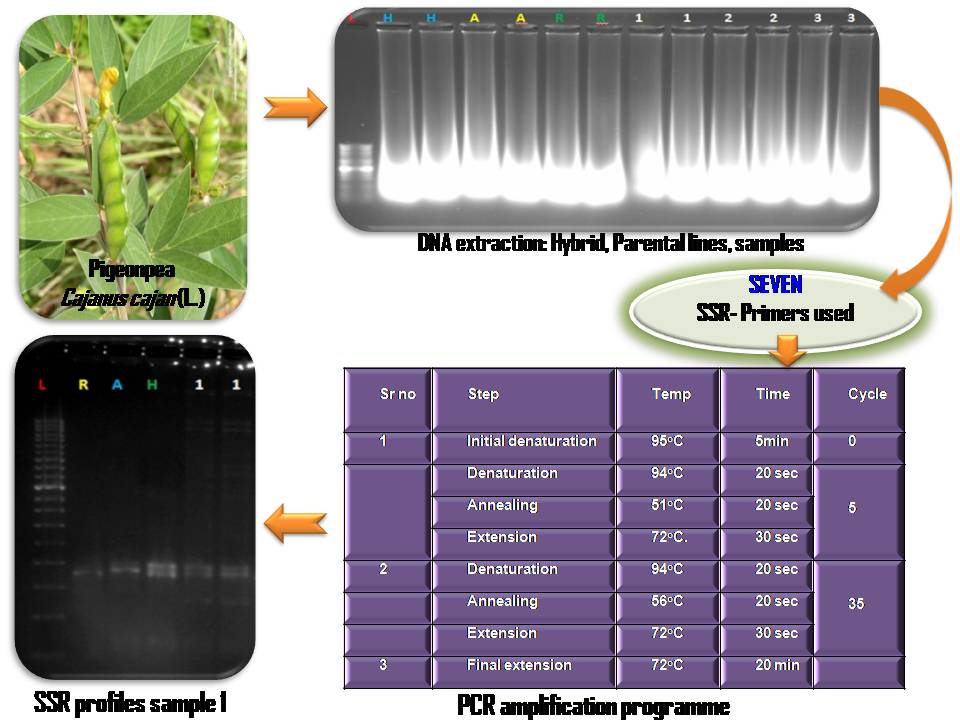Pigeonpea (Cajanus cajan (L.) of Fabaceae family belongs to genus Cajanus usually grown in semi-arid tropics of Asia and Oceania, Africa and America. This crop has been a best source for improving food and soil quality amongst farmers. However, its seed have been always questioned for purity. This problem is managed by using polymorphic SSR markers. In present study, a DNA fingerprints generated by seven SSR markers and hybrid testing is performed on Pigeonpea test samples along with parental lines. The seed samples of pigeonpea were germinated in laboratory and three week old leaves samples were used for DNA isolation by CTAB method. A total of 9 alleles were observed in three test samples using three primers out of seven primers. The screening of the allelic data associated with the three cultivated varieties, revealed markers (CcM0246) displayed unique allelic profiles for one variety. Yet, the genetic fingerprinting data is not well resolved to potentially distinguished two bands of hybrid that are merely of 4–8 bp to confirm hybrid testing of seed. Hybrid testing of may be confirmed including more SSR primers prepared from genomic DNA of pigeonpea.

